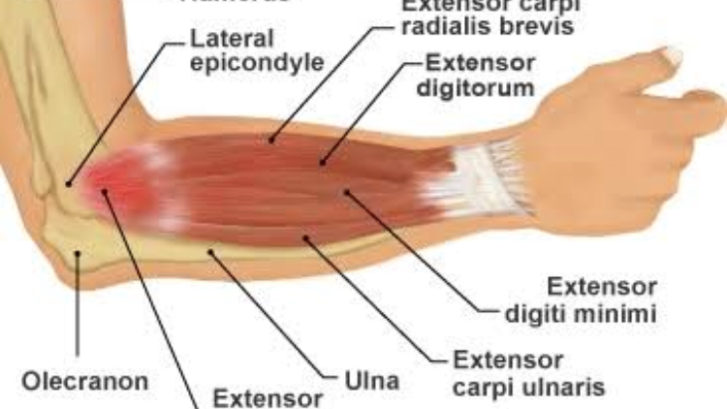Clinical reasoning & treatment for lateral epicondylitis
[vc_row][vc_column][vc_column_text]Tendons are the tissue that attaches the muscles to the bones. Overuse in the upper extremities can result in the diagnosis of the tendonitis or the tendonitis of the wrist, elbow or shoulder. The most common wrist or forearm problems include tendinopathy of the muscles that extend the wrist, otherwise known as tennis elbow.
The major muscles that move the wrist have their origin at the elbow. If the wrist is improperly used, pain may arise in the forearm and/or outside of the elbow. Tennis players and athletes who use backhand and does repetitive motions that extend and fled the wrist is, particularly at risk. Lateral elbow pain may not affect only such players or athletes but also affect who use a screwdriver or hammer on the daily bases or those who great amount of time in gardening taking, painting. The patient who works with a pronated forearm and flexed wrist like computer workers also feel lateral elbow pain and burning sensation which is called as (supinator syndrome).
Clinical reasoning in determining the nature of elbow pain:
Tennis elbow is the common nomenclature for lateral elbow pain.
It is caused due to one or more following consequence,
maligned bones in the elbow and/or carpals, tendonopathy, capsular pain, radial nerve pain, neck and thorax dysfunction.

Treatment strategies :
Frequently tennis elbow is treated with local ultrasound, stretching and wrist strengthening, however, there are several reasons need to be addressed and treatment should be planned accordingly.
Depending on the examination findings, treatment could include
- joint mobilizations to the elbow, cervical and thoracic spines
- soft tissue massage of the scalenes, levator scapula, upper trapezius, latissimus dorsi, wrist flexors
- dry needling of supinator, pronator teres, common extensors, posterior rotator cuff, upper trapezius, thoracic erector spinae
- Exercises for scapulothoracic-cervical mobility & stability (rhythm)
- exercises for thoracic (vertebrae & ribs) mobility and cervical mobility & stability
- mobilization with movement (MWM’s – Mulligan’s technique) for upper ribs, wrist, and elbow
- Mulligan’s and/or McConnell’s taping
- Kinesiotaping
- prescription of elbow or wrist brace
- strengthening exercises for the shoulder, elbow and wrist muscles.
[/vc_column_text][/vc_column][/vc_row]




Leave a Reply
Want to join the discussion?Feel free to contribute!